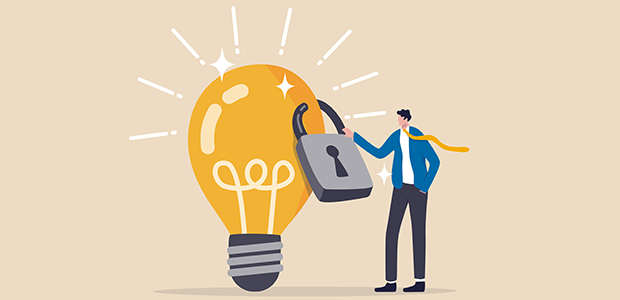
Brand Protection is Not Just for Corporations
When we think about, for example, counterfeit goods or IP infringement, we tend to think about the largest and most well-known brands. Everyone knows that somewhere counterfeit Louis Vuitton, Chanel, and other apparel brand goods exist. But malicious actors fake not only large brands.
Just a few years ago, BIC began working with the US Customs and Border Protection due to an increased incidence rate of counterfeit lighters. These weren’t the kind we might think of, not like Zippo produces, they were the ones that cost a few dollars for a pack of 4 at a gas station.
If any product or brand has room for better margins, which is nearly all of them, counterfeiters will spring into action. They take advantage of the fact that many of the brands want to maintain their reputable image and use better quality materials than average.
Counterfeiters, on the other hand, will take every possible shortcut to extract additional margins, even if it is at the cost of consumers. Therefore, every brand, no matter how big or small, can be affected by counterfeiting.
Counterfeiting is a (criminal) industry
Another frequent myth about counterfeiting is that it happens on a small scale wherein a group of people has access to some machinery and, possibly, warehousing solutions. As the industry has likely exceeded $3 trillion in value, it’s clearly not just a few bad actors making knockoffs.
Additionally, many of the counterfeit products still require a larger scale to make shipments cheaper. In the BIC example above, the margins, even if counterfeited, for a single product are thin. Tens of thousands (if not a lot more) need to be made to have a reasonable impact on revenue.
Some less popular counterfeiting options require industry-grade gear to create. For example, according to the OECD, pharmaceuticals, medical devices, and heavy machinery are all subject to counterfeiting. None of these would be possible to create (and convince an unsuspecting consumer) without equipment.
Unfortunately, the counterfeiting industry is advancing like any other sector, with new, inventive methods of faking products being developed every quarter. They use complex trade routes that facilitate documentation forging, repackaging and relabelling, and even the establishment of distribution centres.
Finally, counterfeit goods are usually not on the top of the priority list for customs and border protection agencies. There are much more forms of dire illicit trade that law authorities are focused on, so counterfeit goods have a greater likelihood of slipping by.
Taking things into your own hands
While law enforcement and government agencies search for and prosecute criminals, brands remain at risk. One of the issues is that, as mentioned, counterfeiting is a criminal enterprise that will do everything in its power to avoid authorities. Even with all the immense and commendable efforts of law enforcement, some counterfeits still make it to the market, as evidenced by OECD reports.
As such, brands can aid law enforcement and government agencies by taking a more active role in finding and catching counterfeit goods. Company input is especially valuable as they have insider knowledge about the specifics of the products they make, which means they have an easier time identifying counterfeits.
Additionally, while companies cannot participate in raids or secure country borders, they can take an active role in another part of the process. Brands can find products that have crossed borders and made it into online markets. While initially, it may seem like an issue, businesses actually help law enforcement by catching those that have slipped through initial checks.
Looking through millions of ecommerce product pages and classified listings would be nearly impossible. With web scraping, however, doing so is merely a question of minutes or hours. There is some setup required, though.
Bringing web scraping to the forefront
Web scraping can scan thousands of pages in a short period of time and extract all of the content within each of them. Yet, applying web scraping in a brute-force fashion would be barely of any help as data teams would have to go through all of that data manually either way.
As such, many businesses use various search functions or parsing techniques to extract the data that’s most meaningful to them. Such an approach significantly reduces the amount of information that has to be analysed manually. In fact, with proper development support, companies can trigger automatic alerts when scrapers notice potential counterfeits.
For example, frequently used keywords some counterfeiters use when listing their knockoff products are “like [brand name],” “AAA quality,” “[brand name] lookalike,” and many others. Searching for keywords has numerous benefits, as counterfeiters are often forced to use them by various marketplaces.
Many marketplaces have buyer protection mechanisms in place, and they may issue refunds if customers buy a fake or counterfeit product. As such, counterfeiters will use some sort of specific lingo to indicate that the product may not be genuine or they are unauthorised to resell them.
Such a combination lends itself perfectly to brands that want to clean up the internet of counterfeit goods. Additionally, a single listing may lead companies to investigate specific sellers further, uncovering a greater operation in place, and allowing them to levy legitimate legal claims to unauthorised sellers.
Finally, while web scraping used to be something that had to be developed in-house, maintained, and carefully utilised, advancements in the web intelligence collection industry have made access to public web data much easier. There are numerous vendors that provide out-of-the-box acquisition solutions that are simple to implement and can be used to monitor thousands of pages without significantly cutting into budgets.

